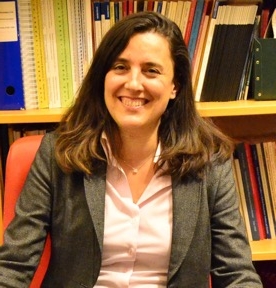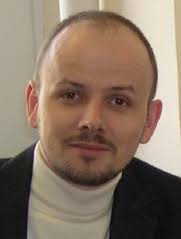Second paper from a Short-Term Scientific Mission (STSM)! (Apr 14, 2015)
Transition metal photochemistry in different spin states is a subject of interest in the group of Prof. Dr. Leticia González at the University of Vienna, Austria. Lately, the group has become interested in metal nitrosyls compounds for their potential applications related to targeted delivery of nitric oxide (NO), which is a fundamental biological regulator and an important signalling molecule. Interestingly, ruthenium nitrosyls are also intermediates in the mechanism of action of some novel anti-cancer drugs. However, the electronic structure of metal nitrosyls and, in particular the description of the metal-nitrosyl bond, is a challenge because the oxidation states of ruthenium and the nitrosyl moiety are not easy to determine unambiguously via experimental means.
On the theoretical side, such tricky bond situations require the use of multiconfigurational methods, which are in the field of expertise of the group of Leticia González Combining complete active space self-consistent field (CASSCF) wavefunctions and an orbital entanglement analysis from the density-matrix renormalisation group (DMRG) method developed in the group of Prof. Dr. Markus Reiher at the ETH Zürich, the Ru–NO bond of the trans-[RuCl4(NO)(1H-indazole)]– complex has been thoroughly analysed. A CASSCF calculation of such large transition metal complexes was possible thanks to the novel Cholesky decomposition methods, developed by Roland Lindh in Uppsala and coworkers. In a one-week STSM at the ETH, Leon Freitag, who is a PhD student of Leticia González, performed the entanglement analysis. The analysis of the wavefunctions in the electronic singlet ground state and the first triplet state provided a picture of the Ru–NO moiety beyond the standard representation based on formal oxidation states. In particular, it turned out that the electron configuration of Ru is an equally weighted superposition of Ru(II) and Ru(III) configurations, with the Ru(III) configuration originating from charge donation mostly from Cl ligands.
This joint work has been recently published in the 'Theoretical chemistry developments: from electronic structure to simulations' special issue of Physical Chemistry Chemical Physics (Phys. Chem. Chem. Phys.):
L. Freitag, S. Knecht, S.F. Keller, M.G. Delcey, F. Aquilante, T. Bondo Pedersen, R. Lindh, M. Reiher, and L. González
"Orbital entanglement and CASSCF analysis of the Ru–NO bond in a Ruthenium nitrosyl complex"
Phys. Chem. Chem. Phys. 2015, 17, 14383-14392 [abstract]
DOI: 10.1039/C4CP05278A









